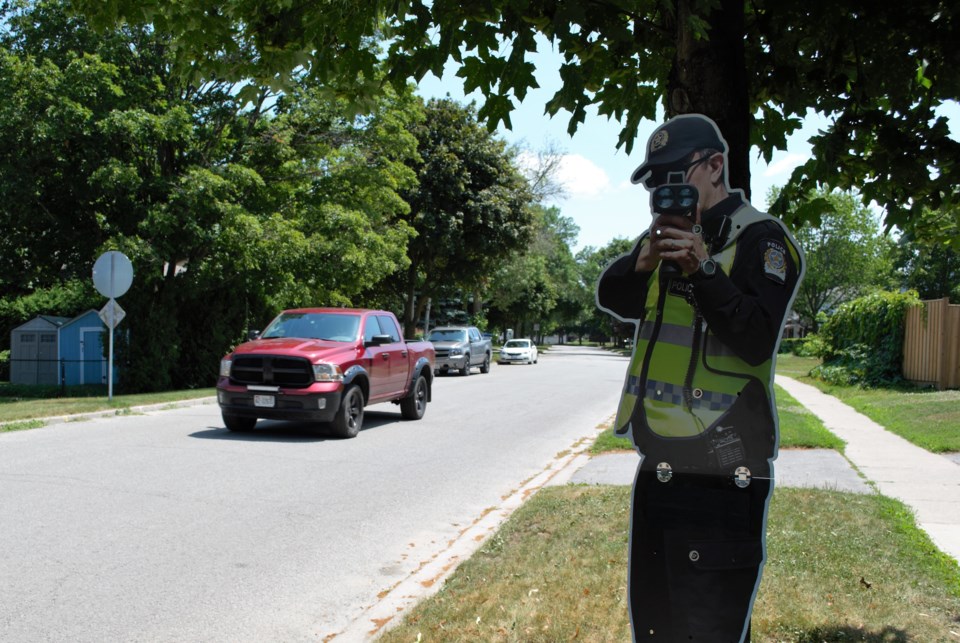Officer Fakeout is reporting for duty.
While city staff haven’t yet come up with an official name for their new metal police officer-shaped cutout designed to calm traffic in Barrie's residential neighbourhoods, the pilot project got underway this week.
“One of this council’s top priorities has been safe neighbourhoods, meaning active transportation and traffic calming. In our residential neighbourhoods, there’s a perception of speeding being rampant,” said Dave Friary, the City of Barrie's director of roads, parks and fleet.
“We needed to come up with innovative ways to slow folks down," he added. "This is just another tool we have.”
The cutout will be moved to different locations around Barrie daily, being placed in locations that have been identified as being in need of traffic calming from 8 a.m. to 3 p.m., at which time the cutout is picked up and stored at a city facility overnight.
The cutout is a generic design from the manufacturer, but Friary said they offer options to customize, so, down the road, it could be in the form of an actual Barrie police officer.
The one-year pilot project officially kicked off this week.
Friary said the city will collect data on whether it works before proceeding with the process to purchase more.
“The reason why we do pilot projects is we try to spend money on innovative ideas, and if it works then we expand the program. If it doesn’t work, we don’t have a lot of exposure or loss,” he said.
“Our hope is we’d like to reduce speeds by five to 10 kilometres per hour," Friary added. "Every little bit helps. If it helps people look up and pay attention, that’s what we’re hoping for.”
Friary lists other calming measures such as temporary speed cushions, road diets and bollard islands as methods the city has used for traffic calming in the past.
“All these things are just tools we have to try to slow people down,” he said.
Friary said some of the benefits of using the cutout are that it was relatively inexpensive in comparison to other methods.
“We wanted to try it out to see if it works. It’s made of metal with an anti-graffiti coating on the front. It has locks on it so it fastens to trees and poles so no one can just pick it up and take it away,” he said.
One of the methods that will be used to collect data on effectiveness will be to place the cutout next to a radar speed board, and compare the data from before the cutout was installed to after.
The cutout isn’t meant to replace the role of the police in enforcing speed limits.
“They will still be out doing radar enforcement. It’s not like they’re going to stop because we have decoy police officers. It’s just a fairly inexpensive way for us to try it out,” said Friary.
“We’re going to monitor the success of the program and then report back to council,” he added.
Decoys are also used by local police departments when it comes to traffic calming.
“Other jurisdictions have done it in the past. I know that years ago to OPP used ghost cars on on-ramps to slow people down,” said Barrie police communications co-ordinator Peter Leon.
Ghost cars are police vehicles with the interiors removed that are towed from location to location and dropped off to deter speeders.
“Just the mere presence of a marked police vehicle has a significant impact. Not realizing that it isn’t the real thing until they’re right there might make people realize there’s been complaints about the neighbourhood they’re in,” said Leon.
“We’re going to be quite interested to see the impact (the cutout) has as well,” he added.
To learn more and read the city’s traffic-calming policy, click here.

